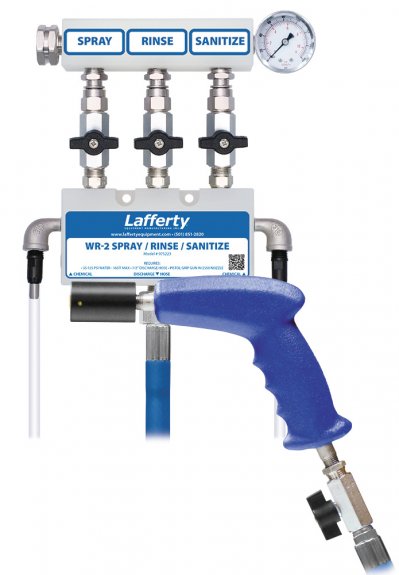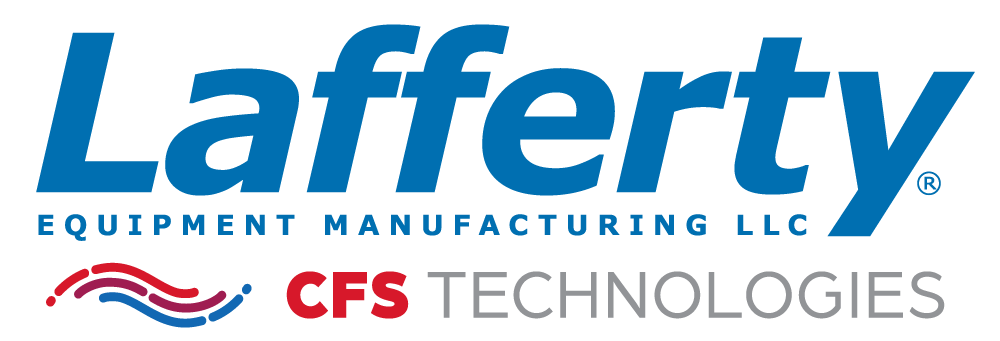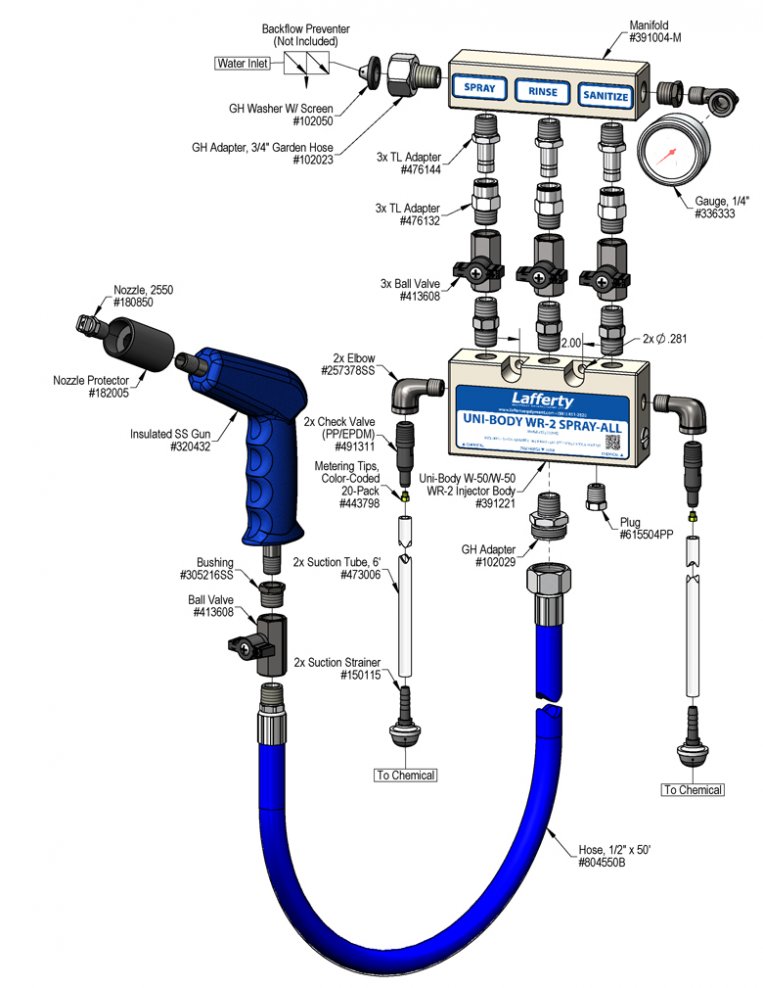Overview
Lafferty Equipment Manufacturing, LLC
Installation & Operation Instructions
Model # 975223 · WR-2 Spray / Rinse / Sanitize W/ Pistol Grip Gun
Requirements
| Chemical Concentrate |
|---|
| Water | |
|---|---|
| Temperature | up to 160°F |
| Pressure | 35 to 125 PSI |
| Flow | 4 GPM @ 40 PSI |
| Supply Line | 1/2" |
| Hose | |
|---|---|
| Spray | 1/2" ID x 50' |
| Rinse | 1/2" ID x 50' |
| Sanitize | 1/2" ID x 50' |
| Nozzle | |
|---|---|
| Spray | 2550 |
| Rinse | 2550 |
| Sanitize | 2550 |


